Annapurna Base Camp Trek – The Himalayan Adventure 11 Days
Alright , if you’re chasing that big Himalayan wow-factor, a real slice of village life, and a trek that isn’t just Insta-fodder but actually worth the sweat, the Annapurna Base Camp Trek (or just “ABC trek” for folks in the know) is where you wanna be. This isn’t some watered-down trail—nope, you’re smack in the heart of the Annapurna region, which, let’s be honest, is about as close as most of us mortals get to a legendary landscape.
You’ll get 11 days to gawk at peaks that look like they’ve been photoshopped—Annapurna I (that monster at 8,091m), the freaky pyramid of Machapuchare (aka Fishtail), Hiunchuli, and a whole gallery of stunners. And when you finally roll up to base camp, surrounded by all that icy drama? Unreal.
But hey, it’s not just about ticking off mountain names. You’ll actually walk through Gurung and Magar villages that are buzzing with life, kids running around, aunties handing out tea, and hospitality that’ll melt you faster than the morning sun on the snow. One minute you’re winding through jungly rhododendron forests, next you’re stomping over rice terraces, then—bam—alpine meadows and crusty old moraines.
So whether you’re a newbie lacing up your boots for your first big trek, or one of those grizzled hikers chasing your next Himalayan fix, ABC is the kind of trip that stays wedged in your brain forever. Looking for the real deal in Nepal? This is it—raw, wild, and exceptionally gorgeous. Don’t say I didn’t warn you.
From the second your boots crunch down on that trail, it’s like you’ve stumbled into some kind of storybook fever dream. Annapurna Base Camp? Man, it doesn’t mess around. One minute you’re weaving through patchwork farms and rhododendron forests where the birds are basically putting on a concert, and the next, bam—you’re up in these wild, dizzying valleys where the air’s thin enough to make you question your life choices.
And those bridges? They swing. Like, actually swing. You’re balancing over raging rivers, marching through Gurung villages that look like time hit pause a century ago. As you drag yourself past 4,000 meters, surrounded by those absolutely savage peaks—Annapurna I, Hiunchuli, Machapuchare (which, by the way, looks like it belongs on a fantasy movie poster)—there’s this wild stillness. For a second, you just freeze, and the mountains basically laugh at how tiny you are.
Honestly, your legs will probably hate you, but your soul? Chef’s kiss. This isn’t just another box to tick off your bucket list. It’s more like the Himalayas grab you by the collar and say, “Hey, pay attention.” And you will, because the views? Stupidly good. Every single step, every gasp for breath—totally worth it.
From Rhododendron Jungles to Alpine Silence: Flora & Fauna of the Annapurna Base Camp Trek
Nature’s kinda like that low-key friend who’s always just there, tagging along on every single step of the Annapurna Base Camp trek. She keeps switching up her look too—like, one minute you’re sweating through thick, tropical stuff, banana trees and cardamom popping off everywhere, ferns tangling your boots. Syauli Bazaar, Landruk? Straight out of a travel ad—layered rice paddies, forests humming with bugs and birds that never shut up. And don’t get me started on those rhododendron forests. In spring, they go absolutely bonkers—red, pink, white, the whole place looks enchanted. Around Chhomrong and Bamboo, it’s all mist, moss, and trees that look like they’ve been watching hikers pass for centuries.
Keep climbing and the vibe flips. Past Dovan and Himalaya, it’s colder, the jungle gives way to pine and bamboo, kinda gloomier but mysterious in a cool way. If you’re lucky (or just have really good karma), you’ll spot a langur monkey swinging by, or hear something skittering—maybe a musk deer. Sometimes a Himalayan monal (basically a bird designed by a rainbow) flashes past. Then, above Deurali, boom—the trees just nope out. Now it’s all scraggly shrubs, wild juniper, tough grass, and that’s about it.
Finally, you stagger into Base Camp at 4,130 meters, and honestly, it’s like landing on the moon. The world goes quiet—wind howling, ice crackling, rock everywhere. Still, life’s stubborn. Tiny flowers push up between stones in summer, a little “screw you” to the cold. The view? Just ridiculous—Himalayas all around, flexing hard. Snow leopards are out there somewhere, but chill, they’re not coming for your snacks. Eagles cruising overhead like they own the place. That’s the magic—every step, the scenery flips and keeps you guessing. One minute you're in a sweaty jungle, next you’re standing in a high-altitude wasteland, soul buzzing, eyes wide open.
Trail of Giants: Full Route Overview of the Annapurna Base Camp Trek
Alright, here’s the scoop — Annapurna Base Camp Trek? It’s not just a “classic Himalayan adventure.” It’s the kind of thing that sticks in your bones, you know? You start in Pokhara, all lazy lakeside vibes and tourist cafés, and then—bam!—you’re heading up into the wild, surrounded by mountains that make you feel like an ant at a rock concert.
So, the trip kicks off with a quick flight (or a bumpy bus, if you’re feeling dangerous) into Pokhara, then a ride out to Kimche. That’s where the real walking starts. The first stretch? Loads of stone steps, winding through these insane terraced hills and forests that look like something straight outta Lord of the Rings. Ghandruk pops up almost out of nowhere, perched right in the clouds. Seriously, you’ll want to linger here—good food, friendliest locals, views that’ll make you question every life choice you’ve ever made.
Climbing higher, the landscape keeps flipping its mood. One minute you’re in bamboo tunnels, next you’re tiptoeing across wild suspension bridges, knee-deep in rhododendrons. Chhomrong is your last “big” village before things get real quiet. The views of Machhapuchhre (that’s the iconic fishtail mountain, and yeah, it really looks like it) are insane from here. Honestly, if you’re not feeling tiny and awestruck by this point, check your pulse.
Past Chhomrong? The crowds thin out, and the forest gets kinda spooky. It’s all mist and moss and creaky bamboo. You’ll pass through Bamboo and Dovan—blink and you’ll miss them—and if you’re lucky, you might spot a Himalayan monal or hear some weird rustling that makes you walk just a little faster. Altitude starts whispering in your ear by now, but it’s a slow, sneaky climb.
When you hit Deurali, everything’s sharper. Cliffs squeeze in, the river roars below, and the air gets that crisp, “I-should’ve-brought-another-jacket” bite. Then you roll up to Machhapuchhre Base Camp, and, man, that peak just stands there like it owns the place (which, honestly, it does). It’s not just a pit stop; it’s a full-on “holy crap, I’m really here” moment.
The last push? Annapurna Base Camp at 4,130 meters. You’re surrounded on all sides by these hulking snow monsters—Annapurna I, South, Hiunchuli, the whole gang. Sunrise from here? Unreal. Like, you’ll try to take photos, but your phone just can’t handle it. Trust me.
Heading down, the trail’s the same but everything feels different. Gravity’s your friend, but your knees might start a mutiny. Best part on the way back? Jhinu Danda. Hot springs, baby. Soak those tired legs, listen to the river, maybe drink a weird local beer. Doesn’t get better.
Wrap it up with a drive back to Pokhara—showers, cheap massages, pizza if your stomach’s up for it. The flight to Kathmandu is quick, but your head’s still somewhere up in those mountains.
Top Highlights of the Annapurna Base Camp Trek – Classic Himalayan Adventure
Why does everyone and their grandma rave about the Annapurna Base Camp Trek? Oh, I dunno, maybe it’s the kind of trip that straight-up hit your senses awake. The mountains? Yeah, they’re massive—like, cartoonishly huge. The villages? Imagine stone cottages, smoke curling up as you stomp through, totally out of breath, but weirdly happy about it. And then there’s that moment you hit Annapurna Base Camp itself—standing there as the sun torches the snowy peaks gold, you kinda forget your toes are freezing off. Happens to the best of us.
This isn’t just some stroll in the park. It’s 11 days of up-and-down, through jungly rhododendron forests, sketchy river valleys (don’t look down), and into the Annapurna Sanctuary, which feels part holy, part ‘did I seriously just walk here?’ territory. Add in a splash of culture—locals who’ll feed you dal bhat like it’s a competitive sport, hot springs that’ll make you question your city life choices, and a final view that’s honestly, no joke, worth every sweaty step. If you like a dash of pain with your pleasure (adventure-wise), this trek’s got your name all over it.
So, what’s hot on the Annapurna Base Camp Trek menu? Let me fire off the greatest hits:
- Touchdown at Annapurna Base Camp (4,130m) – You’re basically smack in the middle of a 360° Himalayan monster mash. Peaks everywhere. It’s bananas.
- Sunrise over Annapurna I and Machhapuchhre – You’re up at stupid o’clock, but trust me, watching those peaks light up? Zero regrets.
- Rhododendron forests in spring – Between Ghandruk and Chhomrong, the trail goes full Lisa Frank. Pink, red, white—flowers everywhere, like nature’s own rave.
- Spotting Himalayan wildlife – Keep your eyes peeled for fluffy langurs or the monal bird. It’s like Pokémon Go, but real and you can’t catch ’em.
- Crashing in Gurung and Magar villages – Home-cooked food, endless cups of tea, and maybe a dance or two if you’re lucky.
- Hot springs at Jhinu Danda – Drag your tired bones into the pool. That’s it. That’s the magic.
- All kinds of trails – One minute you’re in bamboo, next you’re hopping rivers, then suddenly it’s alpine meadows. No chance of getting bored.
- Annapurna Sanctuary – This place has major sacred vibes, and even the most hardcore skeptics end up feeling something.
- Outrageous photo ops – Machhapuchhre’s fishtail peak, glaciers, epic valleys. Instagram will thank you.
- Chill elevation gain – Good news for newbies: the altitude rise is steady, so you don’t have to worry (too much) about feeling like a dying fish.
- Heli exit, if you’re feeling baller – Run outta time (or stamina)? There’s always the option to hitch a chopper out in style.
- Finish line: Pokhara – You made it! Now go celebrate by the lake, grab a cold one, and relive every wild step. Pokhara’s got the good vibes, trust me.
Ready to lace up? Annapurna’s waiting, and honestly, it doesn’t care how many squats you skipped.
Best Seasons & Trekking Conditions for Annapurna Base Camp Trek
Alright, so you’re thinking about the best time to hit the Annapurna Base Camp Trek. Here’s the real deal: timing isn’t everything, but you’d better believe it can turn your trek from “meh” to “whoa, I’m moving here.” The trail’s open pretty much all year—Nepal doesn’t shut the gates or anything—but each season’s got its own mood, perks, and, let’s be honest, a few little annoyances you’ll want to know about before you start flexing those calves.
Autumn (September to November) is just *great*. Honestly, it’s like the mountains put on their best outfit just for you. Monsoon’s over, so the air’s so clear you’ll feel like you’re in some National Geographic photo shoot. Days are comfy, nights get a bit nippy, but nothing a warm cup of tea and a good sleeping bag can’t handle. And the colors? Everything’s just freakin’ alive—rhododendrons, wildflowers, all the green you could possibly want. Downside? You and about a million other trekkers had the same idea, so expect a bit of a crowd. But hey, the vibe’s unbeatable and the teahouses are buzzing with life.
Spring (March through May) is a close runner-up. Things start warming up, the snow on the big passes chills out (literally and figuratively), and the hillsides? Boom—rhododendrons everywhere. So if you’re into flowers or just want your Instagram to pop, this is your jam. The trails can get a little squishy with all the melting, but honestly, nothing that’ll make you want to turn back. Plus, it’s a bit quieter than autumn, so if crowds give you hives, spring’s got your back.
Winter (December to February) is for the brave. I mean, if you’re cool with the cold—and I mean *cold*—it’s actually pretty epic. Fewer people, more solitude, and those mountain views? Sharper than your ex’s comebacks. Just don’t skimp on the gear, because temps drop faster than my motivation on a Monday. Might hit some icy patches higher up, so a bit of trekking know-how (or a solid guide) is smart. But the peace and those crisp blue skies? Totally worth freezing your butt off.
Monsoon (June to August) …ugh, look, I’ll be real: it’s a mess. Rain comes down like it’s got a personal vendetta, trails turn to mud, and landslides can get sketchy. Plus, you’ll be squinting through fog more than actually seeing mountains. That said, if you’re a lover for lush forests and waterfalls, and you don’t mind being a bit soggy, it’s kinda magical in its own wild way. Just go with zero expectations for dry socks and bring a poncho. Or three.
So, yeah, pick your poison. Each season’s got its thing, just depends on what you’re after—crowds and color, solitude and snow, or rain-soaked jungle vibes. Just don’t show up in flip-flops, alright?
Food & Accommodation on the Annapurna Base Camp Trek: What to Expect on the Trail
Honestly, the Annapurna Base Camp trek is a whole vibe—don’t let anyone tell you it’s just for gnarly, frostbitten mountaineers. Nope, it’s classic Nepalese teahouse trekking, which means no pitching tents in blizzards or gnawing on questionable protein bars. Instead, you’re chilling in these welcoming, slightly ramshackle lodges every night, and let me tell you, the food will straight-up blow your mind (in a good way, not in a "why is this glowing?" kind of way).
Let’s talk beds. Down low, in places like Ghandruk or Chhomrong, you’re looking at these stone-and-wood teahouses—real charm, comfy beds, maybe even a fireplace. Feels like staying at your cool Nepali grandma’s house. As you climb, things get... let’s say “minimalist.” By Deurali or Machhapuchhre Base Camp, you’re lucky if the walls keep out the wind and your shower isn’t just a pipe with glacier melt. Still, beds are clean-ish, and after hiking all day, you could probably sleep on a yak. At Annapurna Base Camp itself (4,130 meters up, so you’re basically in the clouds), it’s super basic—think wooden bunks, thin walls, and survival mode. But you’re so wiped, you’ll be grateful for any mattress that isn’t just a pile of rocks.
Now, food. You’d expect bland, right? Nope. Every teahouse rocks a menu with dal bhat (that’s lentil soup with rice, the holy grail of trekking meals), momos (dumplings—steam or fried, who cares, eat ‘em all), noodles, pasta, even the odd pancake or omelet. You’ll find yourself actually looking forward to lunch. Soup is a life-saver too—hot, salty, and makes you forget your toes are numb.
Veggies and fresh stuff? Down low, you’ll get some, but the higher you trek, the more you’re living on carbs, pickles, and the occasional mystery apple. If you’re vegetarian or vegan, honestly, you’ll survive, but maybe stash a few protein bars or nuts just in case the menu turns into a carb party. Hydration is a whole game—water comes straight from the mountains, but unless you want your guts to stage a rebellion, always treat or boil it. Trust me.
Cleanliness? Ha. It’s not gross, but standards slide the higher you go. Bring hand sanitizer and wet wipes, and just accept that your hair will look like a bird’s nest for a week. Electricity is a rare, precious thing—everything’s solar, and you’ll probably pay to charge your phone. Welcome to off-grid life.
The real magic? Those crowded, slightly smoky dining rooms, where everyone’s swapping stories, nursing mugs of tea, and pretending they’re not totally exhausted. It’s weirdly cozy. You’ll make friends, or at least find someone to complain about blisters with.
Annapurna Base Camp is the sweet spot between “roughing it” and “comfy adventure.” Rustic beds, hearty food, and enough creature comforts to keep you sane. And honestly? Those simple mountain meals stay with you long after you’ve dusted the mud off your boots.
Trekking Permits & Rules for Annapurna Base Camp: The Real Deal
Alright, let’s get real—before you even lace up those hiking boots for Annapurna Base Camp, you gotta sort your permits. No way around it. Nepal’s not messing about with these rules either; it’s all about protecting the mountains and making sure the local folks actually benefit from all the foot traffic.
First thing’s first: the Annapurna Conservation Area Permit, aka ACAP. This is basically your VIP pass into the park. No ACAP, no trek. You’re wandering through the biggest conservation area in Nepal, so they want you to chip in. The fee? Usually about $30 USD if you’re from abroad, but honestly, check before you go—prices do their own thing sometimes. Snag it at the ACAP office in Pokhara, or your trekking agency can often hook you up in Kathmandu before you even head out.
Then, you’ve got the TIMS card—Trekkers’ Information Management System. Sounds fancy, but it’s just Nepal’s way of keeping tabs on who’s stomping around the trails. It’s partly about your safety, partly about, well, bureaucracy. Independent trekkers get the green card (not the immigration kind, relax). If you’re rolling with a guide, you might get a blue or pink one. Where do you get this thing? The Nepal Tourism Board office in Kathmandu or the tourism office in Pokhara will sort you out. Last I checked, it’s about $20 for foreigners.
Heads up, don’t even think about showing up without your passport and a couple of those awkward passport photos. They’ll want to see ‘em for both permits. Oh, and keep your documents handy—you’ll get stopped and checked when you enter the conservation area. No dodging that.
Unlike some of the trickier treks (Upper Mustang, Kanchenjunga… ), you don’t need any extra permits for Annapurna Base Camp. But honestly, going with a guide isn’t just safer, it’s way more fun and puts some cash in the local economy. Win-win.
One last thing: permit rules and fees? They love to change when you least expect it. Double-check with your trekking agency or hit up the official Nepalese government sites before you pack your bags. Better safe than staring at a closed checkpoint, right?
Fitness Level & Trekking Difficulty for the Annapurna Base Camp Trek
Okay, let’s cut the fluff—Annapurna Base Camp Trek isn’t some chill walk in the park. It’s more like a “test your willpower and maybe your knees” situation. If you’re the type who gets winded climbing two flights of stairs, you might wanna rethink or, better yet, start prepping—yesterday.
You’re looking at about 110 kilometers, give or take, stretched over 11 days. Sounds doable, right? Until you realize you’ll be slogging up endless stone steps, hopping over rocks, and occasionally wondering if you’re still on planet Earth or accidentally wandered into Mordor. Some days you’ll be walking for 8 hours straight. Other days, it’s just five. Piece of cake? Not really. The trails can get slick—rain, mud, surprise snow—so, yeah, pick your boots wisely and maybe practice your “don’t slip and embarrass yourself” routine.
Now, altitude. Oh boy. You start around 1,000 meters and drag yourself up to 4,130 meters. That’s high enough for your body to be like, “Excuse me, where’s my oxygen?” Altitude sickness is real, and it doesn’t care if you did CrossFit last week. Go slow. Drink water. If your head feels like it’s about to explode, stop and chill. Nobody hands out medals for heroics that end in helicopter rides.
Training? You’ll want cardio, leg days, and then more leg days. Run, cycle, swim—whatever gets your heart pumping. Squats and lunges are your new best friends. Seriously, your thighs will thank you later. Don’t skip core work either; you’ll need that stability when you’re wobbling over some sketchy bridge with a backpack that feels like it’s filled with bricks. Oh, and speaking of backpacks—practice hiking with some real weight. Don’t wait until day one in Nepal to figure out that 10 kilos feels like a small bear clinging to your back.
Real talk: Annapurna is a “moderate” trek, which in Nepal-speak means “not gonna kill you if you’re fit, but don’t expect a spa day.” No mountaineering skills needed, no ropes, no ice axes. Just guts, grit, and a healthy respect for the mountains. Show up fit, keep your ego in check, and you’ll be golden.
If you’re really Type A, throw in some yoga or breathing exercises—helps with the whole “thin air” situation. And for the love of snacks, pack some. Altitude will mess with your appetite and salt levels. Electrolytes are your friend.
At Vays Treks Nepal, we've been doing this for years. We'll send you a complete packing list and training tips when you book. Our guides check everyone's gear before we start - we want you to be comfortable and safe out there!
In a hurry but still want to experience the Himalayas? Take our Annapurna Base Camp Helicopter Tour , a thrilling flight that whisks you directly to the iconic base camp in just a few hours.
🧭 Alternative Tours & Packages
- Annapurna Luxury Trek – Premium Accommodations with Mountain Views
A refined trekking experience through the Annapurna region, featuring comfortable lodges and stunning mountain backdrops. Enjoy guided walks through picturesque villages while relaxing in premium accommodations along the way.
- Mardi Himal Trek – Annapurna’s Hidden Gem Adventure
A lesser-known but spectacular route that winds through peaceful forests, ridges, and open viewpoints. Mardi Himal offers close encounters with Machapuchare and the Annapurna range in a quieter, more serene trekking environment.
- Annapurna Circuit Trek – World’s Best Trekking Experience
A legendary trekking route that circles the Annapurna range, crossing high mountain passes and offering an incredible mix of landscapes, cultures, and natural beauty. Ideal for those seeking an immersive and rewarding Himalayan adventure.
- Annapurna Circuit Trek
One of Nepal’s most iconic trekking routes, the circuit traverses varied terrains — from lush valleys to high mountain passes. It’s a longer journey that showcases cultural diversity, dramatic landscapes, and unforgettable panoramic views.
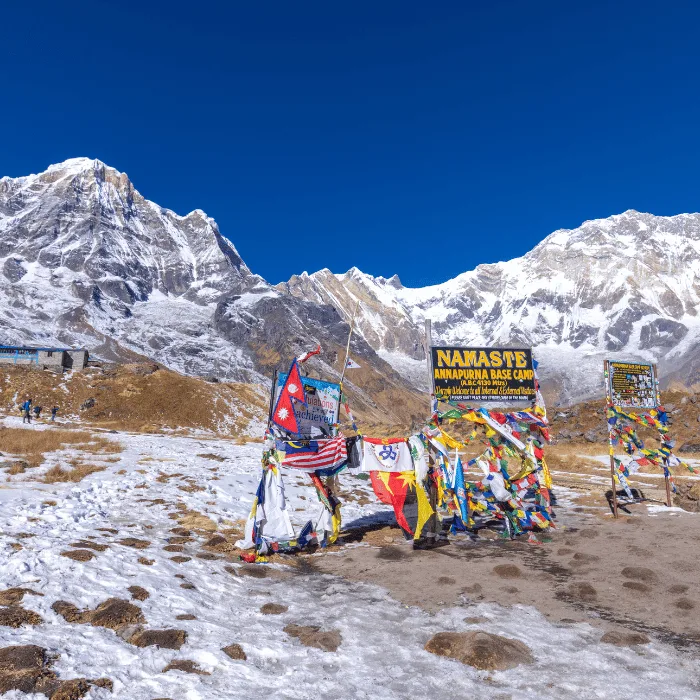
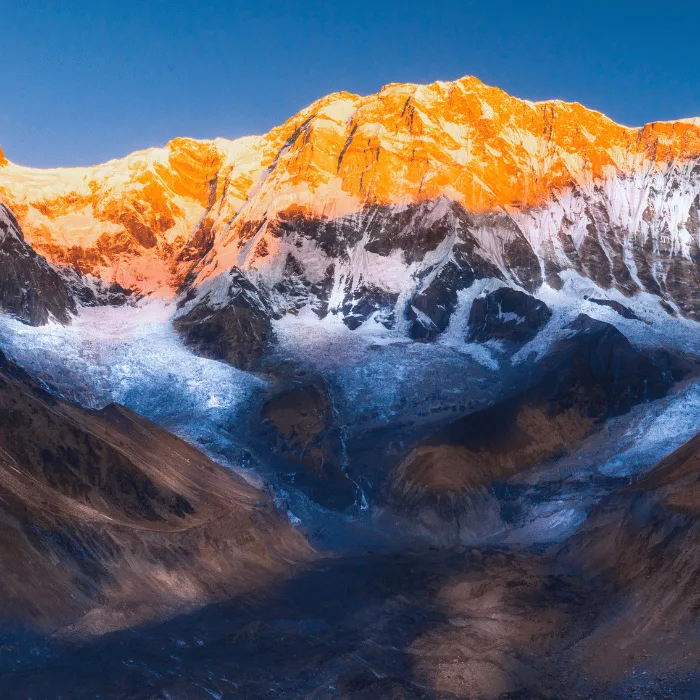
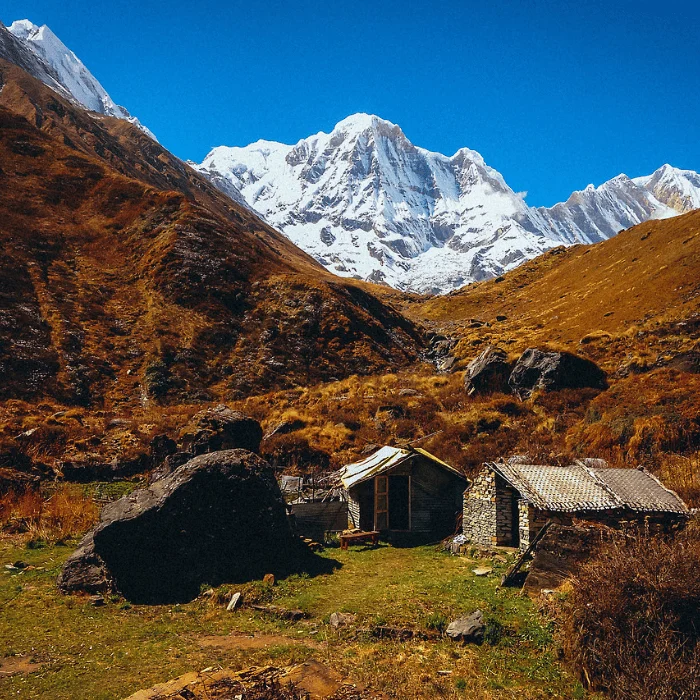

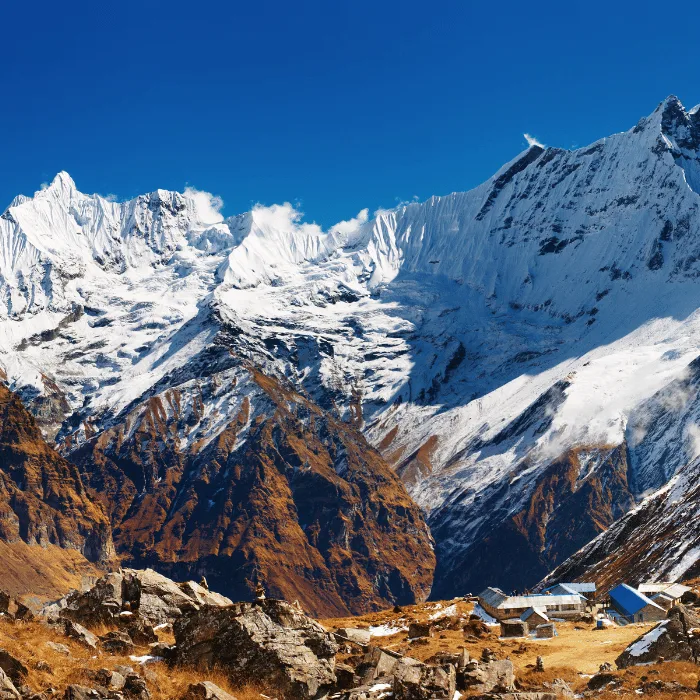


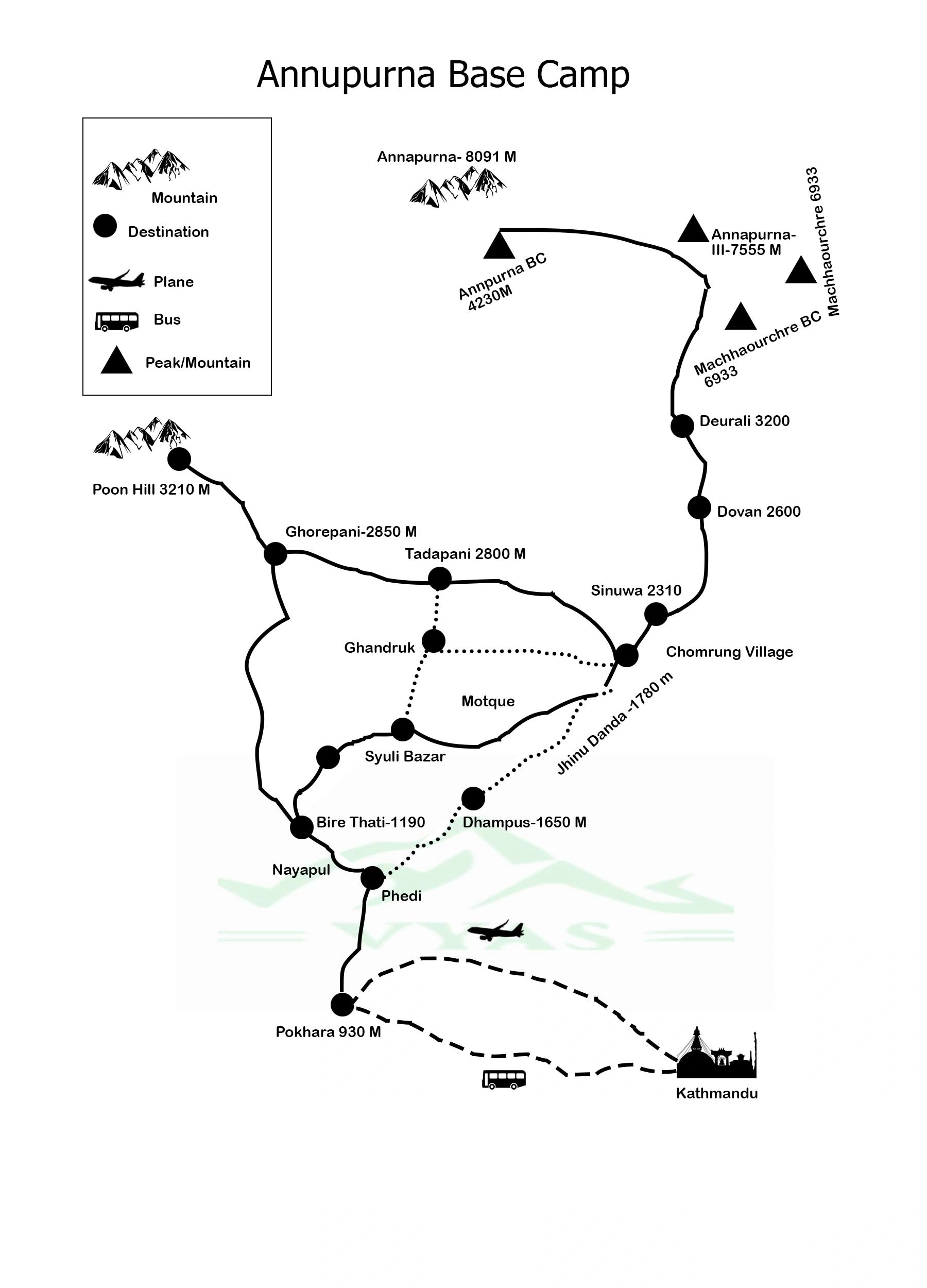






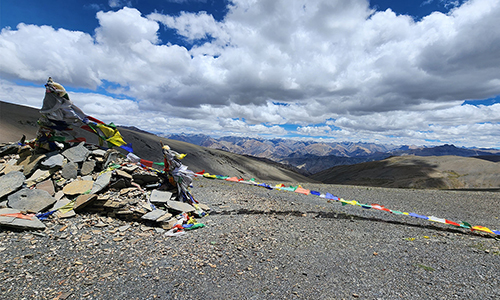

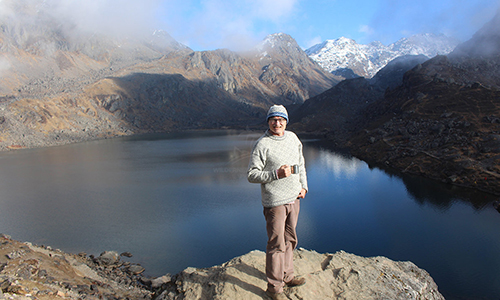


Michael Thompson
2025-06-16 13:48:43
The Annapurna Base Camp Trek with Vyas Trek Nepal was truly a classic Himalayan adventure! The views were absolutely stunning, and our guide was incredibly knowledgeable and supportive. Every detail was perfectly managed, from the tea houses to the trail pacing. Highly recommended for trekking enthusiasts!